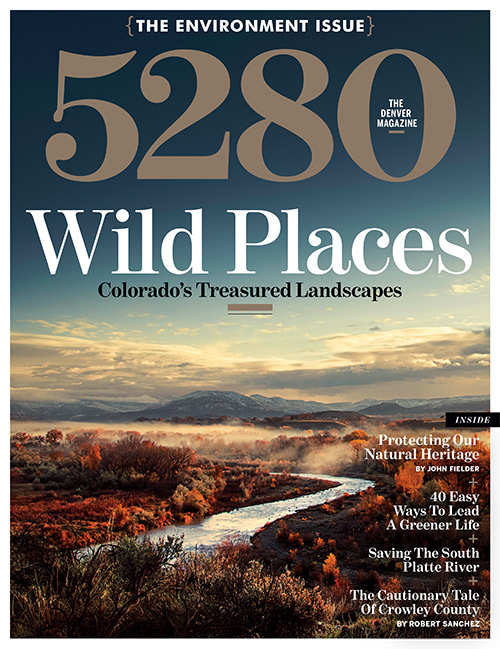The Local newsletter is your free, daily guide to life in Colorado. For locals, by locals.
As Coloradans, our wild places tie us together. When you live here, as I have for 45 years, you learn that perhaps the one thing that most connects us to one another is our need to be outside. You learn that, collectively, we are compelled to experience the stabilizing force of our natural surroundings. And today, as the world continues to become more crowded and chaotic, the personal sense of security derived from things that are permanent—or seem to be permanent—like the wilderness, is more important than ever.
It’s critical to remember, though, that our landscapes are not static, but rather living, dynamic environments full of both the calm and fury of nature. We should all want to keep them that way. We should want to maintain these treasures for our children, and our children’s children, so they can experience the flows and patterns and sensuousness of the outdoors. I am a nature photographer, and I can say this without reservation: It is one thing to view photographs of our wilds, and something else entirely to be in those landscapes. There is no substitute for tasting, smelling, feeling, and hearing wilderness. The mineral-rich flavor of a mountain stream in spring; the touch of powdery aspen bark in the summer heat; the smell of decaying leaves during autumn; the sound of winter winds whistling through blue spruce: These are the ways a Coloradan should experience the state’s abundance.
Throughout the years, we have worked diligently to safeguard these natural gifts. Today, more than 3.6 million acres of Colorado land are federally protected as wilderness, and we annually preserve tens of thousands of acres of ranches and farms through conservation easements. On top of that, we are the only entity in the world that dedicates all of its lottery profits, typically more than $100 million each year, to preserving our environment. All told, the Colorado Lottery has given more than $2.7 billion back to the state to protect more than one million of our state’s 66 million acres. That money is funneled through partners such as Great Outdoors Colorado (GOCO). Since 1992, GOCO has worked with local governments, Colorado Parks and Wildlife, and land trusts to create parks, protect open space and wildlife habitat, build trails, and preserve ranchlands and rivers.
Even with these successes, the state’s economy and ecology seem to be locked in an ongoing conflict. We need jobs for our citizens, and the energy industry is providing them in record numbers. It is reviving towns and issuing paychecks and boosting our economy. Yet, we are conflicted by fossil-fuel energy development and its negative impacts on our sublime topography. The tourism and recreation industries are setting their own records for revenues and job creation, but we need to be concerned about the harm human footfalls can cause to our natural settings as well.
How will we balance our needs as Coloradans? We must start by having candid conversations about development and our wilderness, and we—all of us—have to be prepared to make difficult decisions in the not-too-distant future. History shows societies that protect their fresh water and forests survive longer, and that a close relationship with nature makes people healthy, happy, and prosperous. In turn, flourishing societies have the resources to preserve the environment. In biology, this is called symbiosis—one thing depends upon the other. Colorado and its citizens have long understood this intuitively; however, as we move forward, the question becomes: Do we have the wisdom, foresight, courage, and sense of obligation to continue to make choices and investments that will perpetuate Colorado’s remarkable wild places? I hope the answer is yes. It would be a shame, and a tragedy, if one day the only way we can enjoy our state’s unmatched beauty is through one of my photographs.









